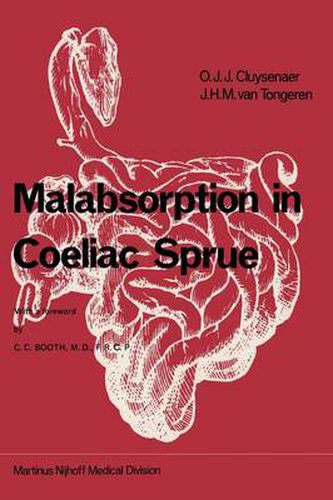Readings Newsletter
Become a Readings Member to make your shopping experience even easier.
Sign in or sign up for free!
You’re not far away from qualifying for FREE standard shipping within Australia
You’ve qualified for FREE standard shipping within Australia
The cart is loading…






This title is printed to order. This book may have been self-published. If so, we cannot guarantee the quality of the content. In the main most books will have gone through the editing process however some may not. We therefore suggest that you be aware of this before ordering this book. If in doubt check either the author or publisher’s details as we are unable to accept any returns unless they are faulty. Please contact us if you have any questions.
For at least three centuries, Holland has been at the centre of research on intestinal malabsorption. In the 17th and 18th centuries, early descriptions of coeliac disease and tropical sprue were published by physicians trained in Holland, and it was in 1950 that Dicke published his painstaking and vital observations that coeliac disease in children was caused by the inges tion of wheat flour. Subsequent careful work with van de Kamer and Weijers showed that the harmful agent was gluten. Since these discoveries were made, research in intestinal malabsorption, particularly in the adult, has continued in several centres in Holland. At Nijmegen, for example, dr. Cluysenaer, dr. van Tongeren and their as sociates have been involved in long-term studies of patients with intestinal disease for the past fifteen years. In this book they describe their experience of the investigation and treatment of fifty patients with the adult form of coeliac disease. Their monograph gives an account of the history, definition and incidence of the disorder, and then goes on to undertake a critical review of the pathogenesis of the coeliac lesion. Before embarking on the different patterns of malabsorption seen in adult coeliac disease, the authors describe the normal small intestine, its morphology and function.
$9.00 standard shipping within Australia
FREE standard shipping within Australia for orders over $100.00
Express & International shipping calculated at checkout
This title is printed to order. This book may have been self-published. If so, we cannot guarantee the quality of the content. In the main most books will have gone through the editing process however some may not. We therefore suggest that you be aware of this before ordering this book. If in doubt check either the author or publisher’s details as we are unable to accept any returns unless they are faulty. Please contact us if you have any questions.
For at least three centuries, Holland has been at the centre of research on intestinal malabsorption. In the 17th and 18th centuries, early descriptions of coeliac disease and tropical sprue were published by physicians trained in Holland, and it was in 1950 that Dicke published his painstaking and vital observations that coeliac disease in children was caused by the inges tion of wheat flour. Subsequent careful work with van de Kamer and Weijers showed that the harmful agent was gluten. Since these discoveries were made, research in intestinal malabsorption, particularly in the adult, has continued in several centres in Holland. At Nijmegen, for example, dr. Cluysenaer, dr. van Tongeren and their as sociates have been involved in long-term studies of patients with intestinal disease for the past fifteen years. In this book they describe their experience of the investigation and treatment of fifty patients with the adult form of coeliac disease. Their monograph gives an account of the history, definition and incidence of the disorder, and then goes on to undertake a critical review of the pathogenesis of the coeliac lesion. Before embarking on the different patterns of malabsorption seen in adult coeliac disease, the authors describe the normal small intestine, its morphology and function.